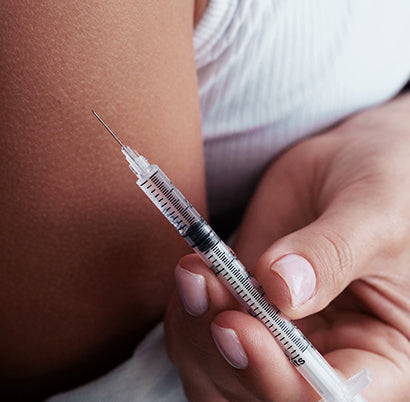
Why Does Delivery Method Matter in Research?
Peptides are being studied more and more in scientific research because of their ability to interact with the body’s natural systems. But how they’re introduced—or delivered—into the body (or a test system) can make a big difference.
The delivery method affects:
- How well the peptide is absorbed
- How long it stays active
- What part of the body it reaches
In research settings, scientists choose the delivery method based on the goals of the study and the nature of the peptide being used.
1. Subcutaneous Injections (Under the Skin)
This is one of the most common ways peptides are delivered in lab research. A small needle is used to inject the peptide just under the skin, where it can slowly enter the bloodstream.
Why researchers use it:
- It’s simple and controlled
- It allows the peptide to absorb over time
- It avoids being broken down in the digestive system
2. Intramuscular and Intravenous Injections (Into Muscle or Vein)
Some studies require the peptide to act quickly or reach high levels in the blood. In these cases, injections into a muscle (intramuscular) or directly into a vein (intravenous) are used.
Why researchers use it:
- Delivers the peptide straight into circulation
- Useful for short-term or fast-acting studies
- Allows close control of dosage
3. Oral or Buccal Delivery (By Mouth or Under the Tongue)
Taking peptides by mouth is more complicated. The digestive system tends to break them down before they can be used. That’s why oral delivery is still a major focus of research.
Why researchers are exploring it:
- It's convenient and non-invasive
- Protective coatings or special ingredients may help peptides survive digestion
- Buccal (under the tongue) delivery is another option being studied for better absorption
4. Topical or Transdermal (Through the Skin)
In studies focused on skin, wound healing, or cosmetic applications, peptides may be applied directly to the skin or delivered through patches.
Why researchers use it:
- Targets local areas (like skin or joints)
- Avoids the digestive system
- Some new technologies are helping larger molecules like peptides get through the skin barrier
Wrapping Up
The method of peptide delivery plays a crucial role in how effectively a compound performs in research. Each approach—whether injection, oral, topical, or transdermal—has its own strengths depending on the study’s goals and the nature of the peptide itself. As research continues to evolve, so too do the strategies for optimising delivery. Understanding these methods helps ensure peptides are used effectively in pursuit of reliable, meaningful results.